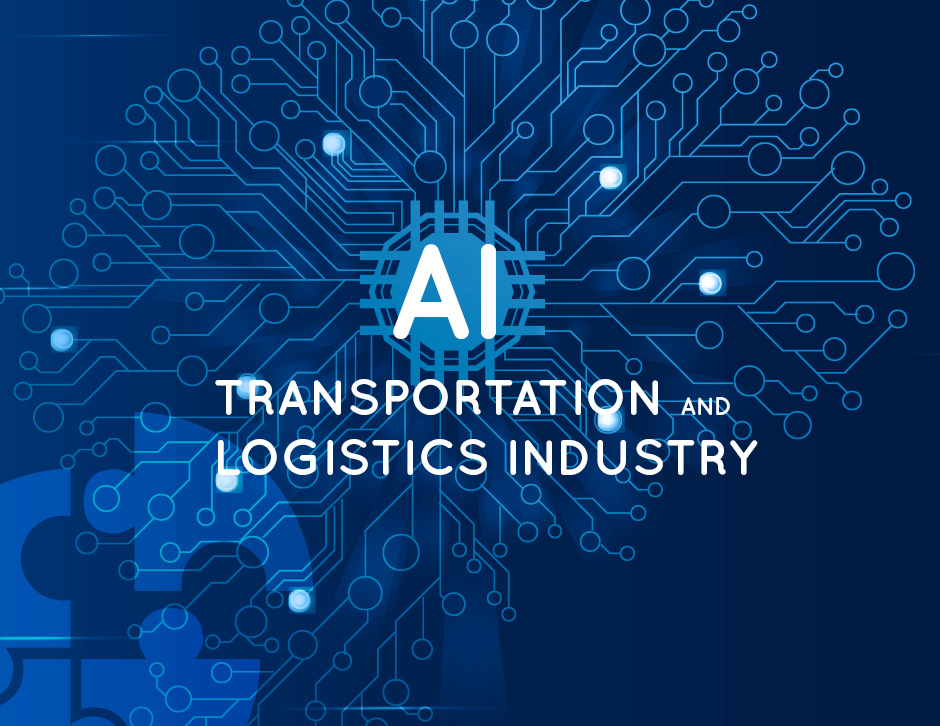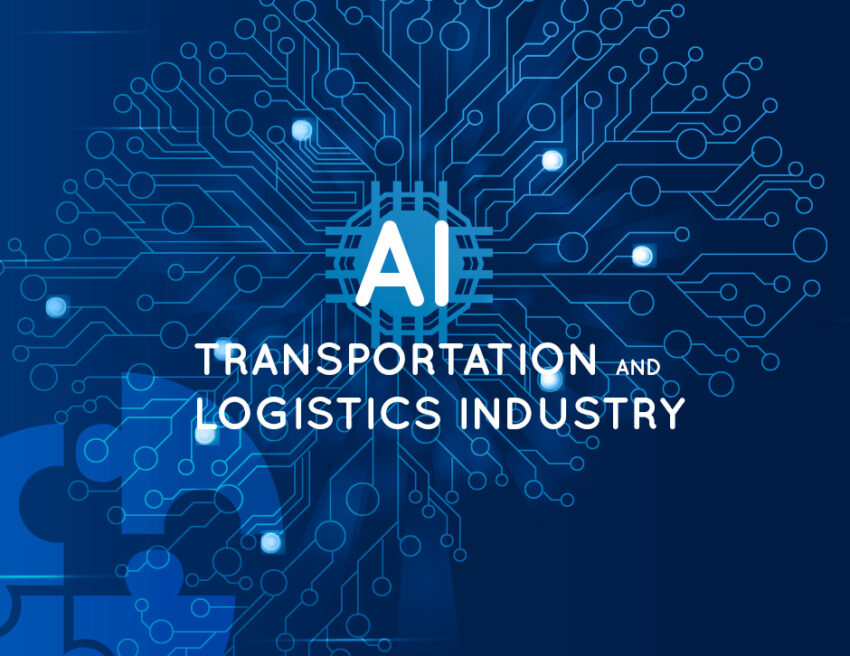
The role of Artificial Intelligence in the transportation and logistics industry
The primary role of AI in logistics is to optimize operations across various functions such as order processing, inventory management, supply chain, and distribution, warehousing, ultimately leading to an enhanced customer experience. By automating routine tasks, AI helps reduce costs, enhance efficiency, and deliver superior customer service in logistics and e-commerce. Real-time parcel tracking and monitoring facilitated by AI further contribute to an improved customer experience. Additionally, AI expedites data analysis, empowering businesses to make informed decisions and refine their operations.AI’s capability to process vast amounts of data enables the creation of forecasts for future intralogistics developments. This includes optimizing warehouse operations by sequencing item placements or selecting picking routes that minimize travel time, among other strategies. Nevertheless, despite the evident benefits, research indicates that not all players in the logistics sector are prepared to adopt AI-based strategies, highlighting the ongoing evolution and adaptation required in this dynamic business landscape.
How AI is being used for online freight forwarding services
-
Predictive Analysis
Implementing demand prediction based on historical data can significantly impact inventory management and operational efficiency, leading to transformative changes in the logistics industry. AI plays a pivotal role in conducting sophisticated data analyses across various levels and time intervals. By leveraging machine learning and other advanced techniques, AI processes large datasets with an error rate of less than 1%, optimizing human resources allocation. Supply chains benefit from AI-driven analytics, enabling proactive risk management and accurate profitability forecasts.With predictive analytics, companies can provide online freight forwarding services by strategically planning shipments using optimized routes, thereby streamlining the entire process. Different transportation modes can be evaluated and optimized based on informed decisions, ultimately enhancing outcomes and efficiency. This integration of AI into logistics not only improves current operations but also paves the way for smarter, data-driven strategies in the future.
-
Fulfillment Operations
AI plays a crucial role in streamlining fulfillment operations through various automation and optimization methods:
- Automating Repetitive Tasks: AI automates labor-intensive tasks like sorting, labeling, and packaging, leading to significant time savings and reduced errors in logistics operations.
- Optimizing Order Picking and Routing: AI algorithms optimize the process of order picking and routing, minimizing fulfillment time and enhancing delivery efficiency. This ensures faster order processing and improves overall delivery times for customers.
- Predicting Demand and Optimizing Inventory: By analyzing customer data and historical patterns, AI can predict demand accurately. This insight enables logistics companies to optimize inventory levels, reducing the risk of overstocking or understocking. Maintaining optimal inventory levels leads to improved efficiency and cost savings.
In summary, AI-driven automation and analytics in fulfillment operations streamline processes, enhance efficiency, and improve customer satisfaction by enabling faster order processing, accurate demand forecasting, and optimal inventory management.
-
Route Optimization
AI plays a vital role in route optimization enabling freight forwarding to digitize their operations by making use of advanced algorithms to process diverse data sources and determine the most efficient delivery routes. Here’s how AI is utilized in route optimization:
- Data Processing: AI algorithms analyze extensive datasets sourced from traffic sensors, GPS tracking systems, weather forecasts, and other relevant sources. This data includes real-time information about road conditions, traffic patterns, accidents, road closures, and weather conditions.
- Optimal Route Identification: By processing this data, AI can identify the optimal route for delivery vehicles based on current conditions. This includes selecting routes that minimize distance, reduce fuel consumption, optimize delivery times, and enhance driver safety.
- Real-time Adaptation: AI continuously monitors and adapts routes in real-time. For instance, if there’s unexpected congestion or road closures due to accidents, the AI system can automatically reroute vehicles to avoid delays and ensure timely deliveries.
- Weather Considerations: AI algorithms take into account weather conditions such as rain, snow, or extreme temperatures. This helps optimize routes by selecting paths that are safe and efficient under prevailing weather conditions.
- Integration with Autonomous Vehicles: AI-powered route optimization is particularly relevant for both manually driven and autonomous vehicles. For autonomous vehicles, AI ensures that routes are optimized to maximize efficiency and safety based on real-time data.
- Continuous Improvement: AI systems can learn from historical data and user feedback to continuously refine route optimization strategies. This iterative process improves the accuracy and effectiveness of route planning over time.
Putting it simply, AI-driven route optimization optimizes delivery operations by leveraging real-time data to select the most efficient and safe routes. This results in reduced fuel costs, improved delivery times, enhanced driver safety, and overall operational efficiency in the logistics industry.
-
Demand forecasting
Accurate demand forecasting is essential for freight forwarders to optimize inventory management and streamline fulfillment processes effectively. AI plays a role in this by using historical data and real-time market trends to predict demand with precision. AI-powered demand forecasting systems excel by incorporating external variables like weather conditions and seasonal holidays. This comprehensive approach ensures a more nuanced and accurate understanding of demand patterns, enabling freight forwarding companies to optimize resource allocation and enhance operational efficiency. Therefore, by leveraging AI-driven insights, logistics firms can proactively adapt to fluctuating demand scenarios and deliver superior service levels to their customers.
-
Inventory management
Wrapping up
In this landscape, it’s noteworthy to mention that The Cooperative Logistics Network, one of the best freight forwarders network of our time, has proactively invested in the development of FreightViewer, a TMS designed to revolutionize the industry. This member-exclusive tool allows for instantaneous quote generation, positioning itself as a cutting-edge freight rate management software. FreightViewer plays a significant role in advancing the digital infrastructure of network members, automating the sales process, enhancing visibility, and elevating the overall client experience. Importantly, it offers a standardized platform for members to seamlessly generate and request quotations, share documents, and extend online rates even to partners outside the network.


